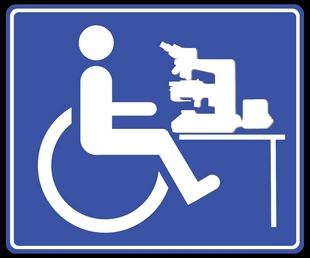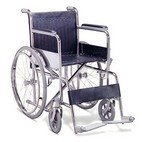Saturday 25 July 2009
Ouch!!!!!!!!!!!!!
May have blogged too soon. Seems that within a week's time, the sharpened points of a million No. 4H Eberhards are back! At times hovers between 7 & 8 on a scale from 1 to 10 with the agonizing burning pins & needles nerve pain back below the knees to the toes. Arrrggghh!!! Seems like Lyrica at my dose does squat.
Monday 20 July 2009
Some Pain Relief?
Some Pain Relief??
Having replaced Gabapentin for Lyrica two days ago, I believe there may be some reduction of neurogenic pain. Where previously my legs below the knees felt like they were being repeatedly stabbed by thousands of sharpened pencil points, now I get the same sensation but as if I'm being stabbed with the eraser end of the pencil. The intensity remains but the sharpness of the pain is reduced. Still annoying but at this point I'm happy for any degree of relief.So far too, I have not noticed any of the extensive list of side effects that Lyrica may induce.
If this remains the case, I shall ask my doctor to increase the dosage next time I require a prescription renewal to see if the pain sensation can be further reduced.
Saturday 18 July 2009
Neurogenic Pain Treament Change
Treating the Untreatable
Neurogenic Pain
It was both a blessing and a curse when in January of 2007, I was reaching for some item in front of me and I realized that my torso actually angled forward. Previous to this, my injury had rendered me a virtual 'rag doll' from the chest down. Now, as the inflammation subsided, signals were beginning to flow again and muscles started to receive more and more signals. Muscles and limbs began to move, even if ever so slowly and weakly. The upside of this increase flow of signals was muscle movement, however the downside was pain. Nerves that send impulses to muscles to make them move, but also send sensory information such as tactile (touch), proprioception (position of limb in space) and, of course, pain.
With physiotherapy much of my muscle strength and action returned. Again, after being paralyzed from the chest to toes, I now have limited action only at the ankles and below. Pivoting my foot downward at the ankle (plantar-flexion) is quite strong, however the opposite, pulling my foot upwards (dorsi-flexion) is very weak. Lateral stability at the ankles is also reduced (feet may wobble or tilt at the ankle with reduced control)
But this post is about pain. It was the signals of pain that started in January 2006 and quickly increaced to a level that hovered between very annoying and excruciating. A constant sensation of a mix between quickly fluctuating "pins & needles"that quickly and repeatably stab and "burning" sensation as if your legs were immersed in very hot water. For me it occured just below the knees and extended to the toes. There would be some fluctuation up or down and in intensity, but for the most part I burned 24/7 from the knees down. So intense that it takes your concentration away ever few minutes as your mind drifts from the task you're doing to acknowledging the pain. Hard to enjoy a book, watch TV or concentrate at your job.
While at the rehab hospital, I was prescribed 300 mg of Gababentin (Neurotonin) three times a day. As my nerve signals were still not getting through at that point I felt no pain. On my discharge in the end of October 2006, I had the hospital discontinue this medication. In January of 2007 when the neurogenic pain revealed itself, I asked my family physician to re-prescribe the Gabapentin once again. I started taking it immediately but really felt no relief. This continued right through to this week. Didn't much help, but I continued taking it as I felt I was doing something to eliminate the pain. No relief and no noticable side effects. I could just as well have been taking a placebo.
I had heard about Lyrica (Pregabalin) on several occasions - from my physiotherapist, from the physiatrist administering BoTox, and some other health care providers. About a year ago (2007), I had asked my family physician about it but he was unfamiliar with the drug. On a quick consultation with his CPS (1), he dismissed it as having too many unpleasant side effects. So that was that...
The pain remained intense and distracting and in desperation I approched him again, intending to insist of trying it. This time, without hesitation or consultation, he wrote out a script for the medication. Strange!!?? I told him that, because of the side effects (discussed at bottom), I would like to start with a smaller dosage and work up if it offered any relief and I could tollerate the drug. I began taking 50 mg of Lyrica three times a day yesterday (July 17th, 2009). Only after one day, I wonder if the sensations are somewhat muted or reduced. Still too early to tell. So far no evident side effects other than perhaps some drowsiness shortly after taking it.
Although nothing will eliminate the pain, I do hope this drug would take the intense edge off and make life bearable again. It's hard to live a joyful, pleasant and productive life with your legs immersed in boiling water year round.
I continue to take the Nortriptyline (25mg at bedtime) for nerve pain but I feel it has little if any affect at all. Perhaps I may ask that be discontinued at some later date to reduce this biochemical soup in my system.
The side effects of Lyrica can include, dry mouth, blurred vision, drowsiness, allergic reactions and edema (swelling of hands and feet) , weight gain and possible increaced suicidal thoughts. This is not a complete list of side effects but some of the more common ones encountered.
(1) CPS - Compendium of Pharmacutical Specialties - a book compliling information on all the drugs available for use by doctors including information on use, dosage, side effects, contradictions, biochemical structure, pharmacokinetics (how it works), manufacturer etc, etc.
Labels:
Gabapentin,
Lyrica,
Nerotonin,
Neruogenic Pain,
Nerve Pain,
Nortriptyline,
Pregabalin
Monday 13 July 2009
Case-Cost Studies & Healthcare
Case-Cost Studies
(How To Take The Care Out Of Healthcare)
As mentioned in a previous post, in a a rather misguided move to save my hospital money, the management closed the 'self-pay' outpatient physiotherapy service (which brought outside money into the hospital) and moved me over to the OHIP(1) or government funded physiotherapy service which is funded by the Ontario taxpayer. In other words, in an attempt to save the Ontario taxpayer money, they switched me from private insurance covered therapy to Ontario taxpayer funded therapy. Go figure!!
I'm sure the Ontario government (or Health Canada) did numerous studies requiring numerous consultants putting in numerous hours of overtime crunching numbers in order to develop cost-case data. These cost-case studies refer to the nature of patient treatment, number of hours of therapy, length of hospital stay and maximum number of hours to be invested etc. in any particular ailment, injury or disease encountered by the appropriate health care facility and it's personnel.
If, say you had a stroke, you would be entitled to x-hours of therapy, only a, b and possibly c drugs, and, oh, 4.76 days of inpatient hospital stay followed by no more than 'y' weeks of outpatient physiotherapy. No more..... but possibly less!
The algorithm has been established by highly paid bean counters, number crunchers and paper pushers in order to establish "appropriate therapy" for the "average patient".
But is there an "average patient"? We are all different with different levels of initial health, different prognoses and responses to therapeutic drugs as well and other therapy. Should each patient not be followed carefully, observing their response to treatment an have it adjusted accordingly, even if some therapy may be unconventional? Should therapy on a non-responsive patient be terminated sooner or should therapy be modified or perhaps extended. Should it not be the goal of any health care facility and the government funded care to restore a person to as close to a healthy and productive state as possible, rather than cut them loose after, say, a hypothetical 12.23 weeks of treatment? Should a patient making significant progress be cut loose after those same 12.23 weeks even though additional treatment will benefit the patient further?
We citizens are not all the same, cut by the same cookie cutter mould, nor should the health care offered be cut by that same mold.
As in my case, it would seem that having me return to a state of health & mobility where I can return to work, earn a living and pay the government my taxes far preferential to having me sit at home on welfare or disability payment. My government should be encouraging health care facilities to do whatever it takes to restore me to a productive state. That would save money in the long run rather than trying to save on the administration of healthcare.
That said, OHIP allows me to receive 16 weeks (max) of physiotherapy after which time I am cut loose regardless of my needs or progress. No ifs, ands, or buts....
My 16 weeks will run out in this upcoming August after which I'll be on my own.
After my initial injury I was told at discharge from the hospital that I'd never walk again. I began receiving physiotherapy 2 to 4 times weekly which has continued for over two years now. I've progressed from having to be hoisted around on a sling to where I can walk unassisted with a walker. I am continuing to improve although the pace is slow.
Imagine if I only had our Canadian Socialized medicine to rely on as administered by OHIP? I would have been discharged as a useless immobile lump after 16 weeks. Goodbye - have a nice life! Luckily, through my workplace, I had supplemental private insurance and luckily they had stubbornly negotiated unlimited physiotherapy. It is only because of that that I have a chance of being independently ambulatory in the future.
How many of us citizens rely totally on OHIP for our healthcare? How many are rich enough to purchase whatever additional therapy we might need with our own savings? How many have supplemental private insurance through our workplace or are astute enough to purchase private insurance coverage when healthy in anticipation of something which we feel will never happen to us? Such a delicate safety net separates us from the hard reality of chronic illness or disabling injury.
Come some date in August I shall be on my own regarding my continuing recovery and progress or I can return to my private insurance for therapy at some private (for profit) clinic in my community.
We in Canada would like to believe that we are compassionate, extending healthcare to those in need, however it is measured and meted out in pre-determined doses at the discression of the government.
(1) OHIP - Ontario Health Insurance Program (Socialized Medicine)
Subscribe to:
Posts (Atom)







.jpg)

